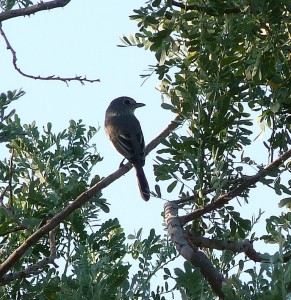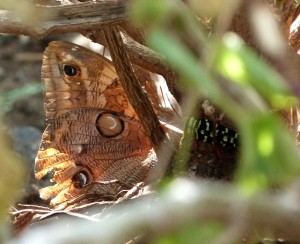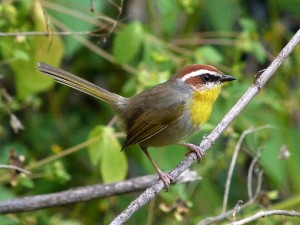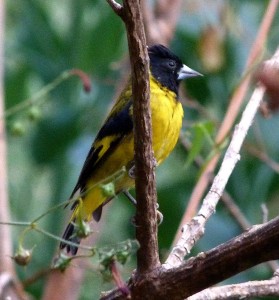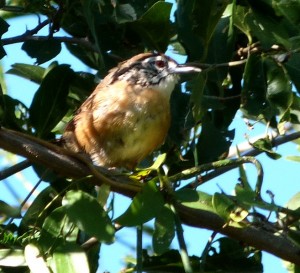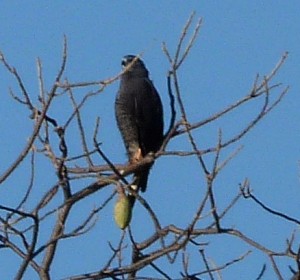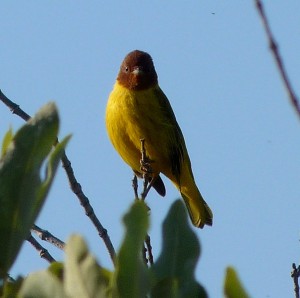Sonora – Yecora, Alamos and the Sea of Cortez
I realize that this tour is quickly becoming but a distant memory being that it occurred more than three months ago, however better late than
never I sometimes say! For me it has actually been a lot more fun going back a couple of months after the fact and taking a second look at the photos and trying to recreate an accurate report of just what exactly we did and saw! Funny but I had actually ended the tour a bit down about the birds that we did or more accurately did not see. After gong back through it all I realize that we did pretty well after all! Here is the story of the Sonora tour from October 2011!
Day 1 – Thursday October 21st. The small but intrepid group pulled out of Tucson ahead of schedule and of we went to the Rio Sonora Valley and on to Hermosillo. The weather was slightly overcast and the birding was too! In other words things were not exactly falling out of the trees. Unlike the previous spring trip the numbers of Sparrows and the like were low at the big Sycamore crossing just south of Cananea. We did manage a few birds but mostly I was interested in moving south and on to bigger fish.One of the interesting no bird moments of the day was finding the big church in Arizpe open to visitors. I have been here dozens of times and only had the pleasure of going in to the church very few times, and it had been years. I was happy to see that it was even better than I had remembered it. It was in excellent condition and the De Anza is still installed in his final resting place in the floor in front of the altar! Admittedly it is a bit bazaire but hey this is Mexico and I really like the weird addition of the mildly inappropriate missed in with stone cold tradition, rather refreshing I think!
El Rodeo was closed for some reason so I was forced to do lunch at the second best place in town, which was fine if not way too much food.
A stop at the hot springs got us our first looks at Caracara and a bunch of Lark Sparrows along with Gray, Dusky and Vermillion Flycatchers.
Day 2 – We got out of Hermosillo early and were birding at the big shrine before we knew it. Well if we had never had experienced a good look at Gray Vireo that was checked off the list, the little suckers were hamming it up! There was also a splattering of other desert birds including Curve-billed Thrashers, Canyon Towhee and several Black-throated Sparrows.Next stop was at the The San Jose Del Pima arroyo where the birding was decidedly slow, but we got good photos of a Couple of Sonoran Mud Turtles enjoying what was left of the moist areas of the arroyo.Lunch par usual at the ever impressive Yaqui river bridge where we were treated to an invasion of Rock Wrens headed south.Further up the road we beat the bushes at the fig tree for little reward in the way of birds, but thanks to Robins keen eye and unfading interest in Butterfly’s, we were all treated to great looks at a recently described species of butterfly! The Minerva Owl was only first recognized as a full species in 1994 and is the only butterfly of this tropical family in northern Mexico Opsiphanes blythekitzmillerae. In November 2007 an anonymous online auction bidder
paid US$40,800 for the naming rights to the butterfly. It was named after Margery Minerva Blythe Kitzmiller of the U.S. state of Ohio, who died in 1972. Researchers at the University of Florida discovered the new species in a butterfly collection at the Florida Museum of Natural History in 2007. It had been misidentified as an example of another species. The 4-inch butterfly is brown, white and black, and is found in the Mexican state of Sonora. Finally it was on to the high country and the pines with our first stop of many at the nearly world famous glory hole, better known to some as the Barranca. Indeed it was a bit chilly and late in the day but the birding proved to be good as usual at the Barranca. We got our first looks at Painted and Slate-throated Redstarts, teased by Blue Mockingbirds and Orange-billed Nightingale Thrushes and worked hard to find what woodpecker was doing the tap taping with no luck. It was a bit late in the day so we head into Yecora for some chow and some must deserved rest in preparation for what promised to be a big day of birding! As usual we spent a little time at the Yecora black water ponds where we got our first impression that there were a lot of sparrows around this fall! Lark, Grasshopper, Lincoln’s, Savannah, White-crowned and Vesper to name just a few were in fantastic numbers throughout the wet and scrubby areas around the ponds. Water birds were comprised of pretty much just the usual suspects including a rather confiding Wilsons Snipe.
The drive up slope was marked by numerous stops searching for highland species. We found our attendant Mountain Pygmy Owl nearly right away and its presence certainly helped to bring in a few other birds that were not so happy to have it around! I got maybe my best photo ever of a Spotted Towhee at one of these stops and we had very cooperative White-striped Woodcreepers at just about every location!The first stop on the microwave road was as good as we could have expected, well at least eventually! After a lot of searching for the Aztec Thrushes that I promised would be there, Robin did come up with one! Eventually we found a couple of them lurking around in the Madrone tree, doing their very best to hide right out in the open! After lunch we made our second trip to the Barranca and were not disappointed at all! Right out of the van we had calling Spotted Wrens and Blue Mockingbirds. Just as we arrived I felt the presences of Black-headed Siskins and not much more unfortunately! As soon as I got out the words, they flew down the canyon before anyone else could get on them. Fortunately like with a lot of birds Siskins are creatures of habit and I figured that if we just ignored the site for a little while they would be back. So off we went trolling
around for Gray-collared Becards and Gray-crowned Woodpeckers, neither of which we found but at least we were ignoring the Siskins! I ended up blowing some more time ignoring siskins by chasing down some Rufous-capped Warblers which I got great photos of. After about 30 minutes I took a rather uninterested look back at the area where the siskins had been feeding…the little boogers were back, I quietly yet quickly called for David and Robin and this time we got the best looks we could have hoped for, what a great little bird it is!
Day 4 – This morning rather than hitting the ponds we forged out to an area that I had not been to for a while. It is a small drainage on the west side of town past the cemetery. We ended up not going too far on the road because the number of birds flying in front of us was so impressive! Once again we were over whelmed by Sparrows, hundreds if not thousands of them and 8 species to boot! Then it was back to the Barranca for one last stop before hitting the road for Alamos. The drive to Alamos was a bit uneventful but we did find the first White-tailed Kite of the season.
Day 5 – This morning we went out to Aduana which due the effects of last year’s frost and this year’s drought probably has less food for the birds than normal, I think we experienced the results of all that. We did manage to see Chachalacas and nice looks at Mexican Parrotlets but we dipped on the Colima Pygmy Owl and the
Scrub Euphonias that we had up high in the arroyo in the spring. This evening we went up to the Mirador with some friends to celebrate my birthday which was even more complete with the quick sighting of a Buff-collared Nightjar in the parking lot lights of the restaurant and the Mirador.Squirel Cuckoo in Alamos
Day 6 – The morning run was out to Las Cabras and the Alamos Sewage ponds and once again they proved to be the birdiest spot in Alamos. Besides picking up a number of the big endemics, the bonus was a good number of shore birds up in the settling ponds, including Solitary Sandpiper. Other highlites were the Happy Wren and the Elegant Trogon.
Day 7 – Today we did the long and bumpy drive out to Palo injerto, I had taken David out there the previous spring and it was pretty good. Today was good but not great. We had hoped for a laughing Falcon but not this time, Purplish-backed Jays were also not to be found. We did get close to this Greater Roadrunner, but no lesser like we had in the same area the previous spring. We did manage to get great looks at Black-vented Orioles a Squirrel Cuckoo and a very accommodating Northern Beardless Tyrannulet.
Day 8 – Leaving Alamos for the coast seemed a bit premature with a couple of bird misses, but this was quickly remedied when I saw a large
black bird out of the corner of my eye just on the edge of town. I had to cover a fair bit of ground in reverse, but indeed it was a bird that we had failed to run into on the previous days in Alamos. An immature Crane Hawk!
The drive through the agriculture was a bit light on birds but the coast made up for it! Big numbers of shore and water birds had already arrived for the winter and birding was fun except for the huge trucks that were passing by with dredged material. After a quick lunch we hit the small mangrove area just to make sure that the Mangrove warbler was still around. Sure enough it came immediately when called, in fact there were two of them.
When we got to the hotel “Playa de Cortez” I went into take a quick nap before dinner. When I woke up I saw David outside on the pier looking out at were hundreds of birds diving into what must have been a big school of fish. It was then that I realized that David was looking at life birds! Dozens of the birds he was looking at were Blue-footed Boobies, a bird that is not always easy to find at this location. He was very happy about this, and I had neglected to mention that this might be possible, so he was doubly happy to have found them on his own!
Day 9 – On the way over to Estero Soldado we made a quick stop in Miramar where once again we had looks at lots of Blue-footed Boobies.
After breakfast it was for Tucson and the end of the tour, I never get tired of this trip, it is so fun to continuously do this itinerary and experience how much diversity there is in Sonora.
